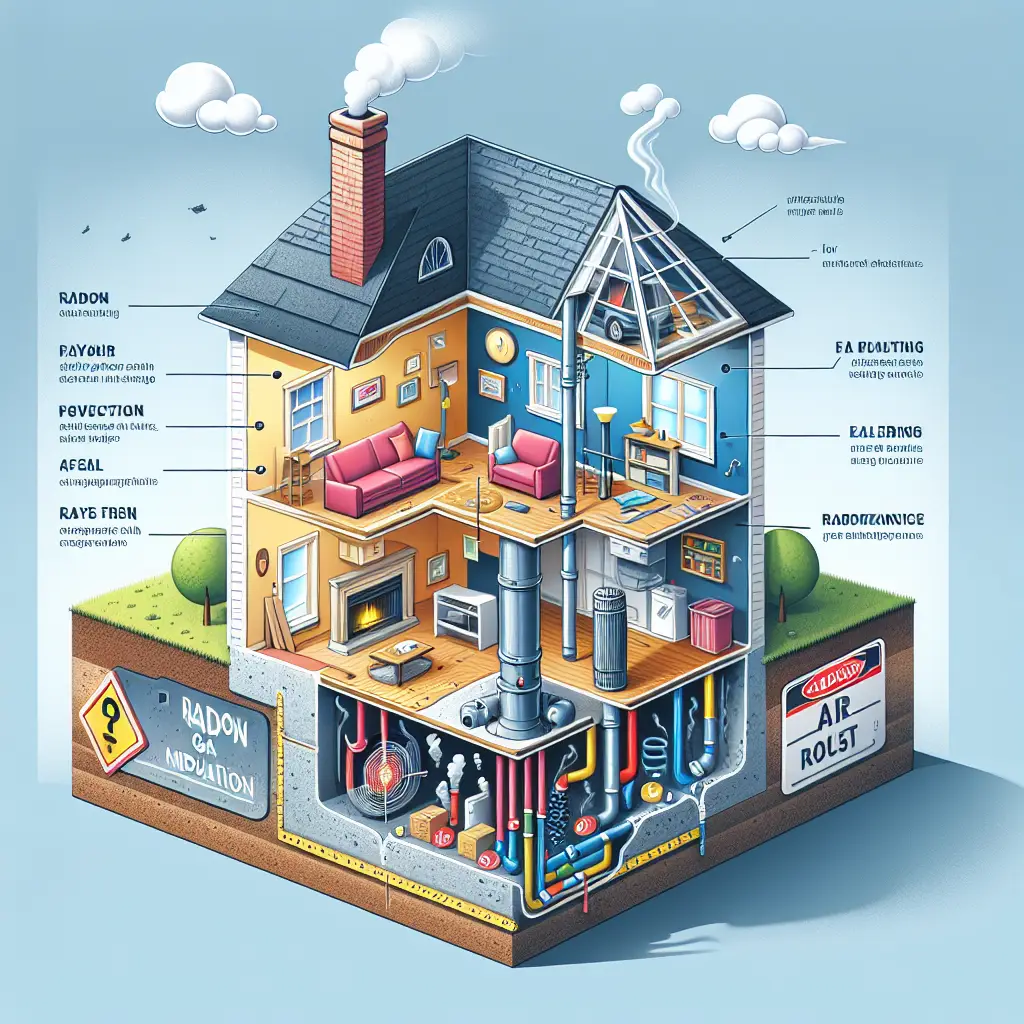Understanding Radon Gas Dangers : What is it and How it Affects Life and How to Prevent Hazards from Radon?
Radon gas often goes unnoticed in discussions about home safety and environmental health, yet it represents a significant health risk for millions of people around the world. Understanding what radon is, how it affects life, and the steps you can take to minimize its hazards are crucial components of maintaining a safe living environment. Here, we uncover the details of radon gas and provide actionable insights to protect you and your loved ones.
What is Radon Gas?
Radon is a naturally occurring radioactive gas that is colorless, tasteless, and odorless. It is produced from the breakdown of uranium in soil, rock, and water and can infiltrate the air we breathe indoors. Radon is a ubiquitous environmental agent, found in varying concentrations across the globe.
How Radon is Formed
The formation of radon gas begins with the radioactive decay of uranium, which is prevalent in certain types of bedrock. When uranium decays, it transforms into radium, which in turn decays into radon gas. As a gas, radon can seep through soil and enter homes through foundational cracks, gaps around pipes, or even through water sources.
How Radon Affects Life
While radon itself may be barely detectable without proper testing, its health implications are significant. In fact, it represents a leading environmental risk to human health, especially concerning lung cancer.
Health Risks of Radon Exposure
The primary health risk associated with radon exposure is its potential to cause lung cancer. According to the Environmental Protection Agency (EPA) and the Surgeon General’s Office, radon is the second leading cause of lung cancer after cigarette smoking. Several studies have indicated that long-term exposure to high levels of radon gas increases the likelihood of developing lung cancer.
- Increased Risk for Smokers: Smokers exposed to high levels of radon are particularly at risk because the combination of radon exposure and smoking significantly raises the potential for lung cancer.
- Risks to Non-Smokers: Even non-smokers are at risk, with radon being the leading cause of lung cancer among this demographic in the United States.
How to Prevent Hazards from Radon
Efficiently mitigating the risks associated with radon gas requires regular testing and proactive measures to limit its infiltration into homes and businesses.
Testing for Radon
Testing is the only way to know if your home has high radon levels. Since you can’t see, smell, or taste radon, using a radon test kit is essential. These kits are easy to use and available at most home improvement stores, or you can hire a qualified radon professional to conduct the test for you.
- Short-term Testing: These tests measure radon levels for 2 to 7 days and are a quick way to determine radon presence.
- Long-term Testing: Long-term tests remain in your space for over 90 days and provide a more accurate annual average radon level.
Reducing Radon Levels
If your home tests show a radon level of 4 picocuries per liter (pCi/L) or higher, the EPA recommends taking measures to reduce these levels. Here are steps you can take:
- Install a Radon Mitigation System: These systems often involve venting radon from beneath your home to the outside, preventing it from entering the living space.
- Seal Cracks and Gaps: Sealing foundation cracks and openings can help reduce radon entry.
- Improve Home Ventilation: increasing airflow within your home can disperse radon concentrations effectively. Consider using fans and airflow systems to increase ventilation
“Radon daughters” (also known as radon progeny or radon decay products) refer to the radioactive particles that are produced when radon gas undergoes radioactive decay. Radon itself is a radioactive gas, and as it decays, it produces a series of solid radioactive particles, often called “daughters” or “progeny.”
Here’s a breakdown of the key aspects of radon daughters:
1. Formation of Radon Daughters
- Radon (specifically, radon-222) decays by emitting alpha particles, transforming into polonium-218, which is the first in a sequence of radioactive decay products.
- This decay sequence includes polonium-218, lead-214, bismuth-214, and polonium-214, each of which is a radon daughter.
- These particles continue to decay, ultimately forming stable, non-radioactive lead.
2. Characteristics of Radon Daughters
- Radioactive Particles: Unlike radon gas, radon daughters are solid particles that can attach to dust and other airborne particles.
- Short-Lived: Radon daughters have short half-lives, meaning they decay quickly but release significant radiation, including alpha particles, which are highly ionizing.
3. Health Risks of Radon Daughters
- When radon is inhaled, it may enter the lungs and decay, releasing its daughters in the respiratory tract.
- High Ionization Damage: The alpha particles emitted by radon daughters can cause intense, localized damage to lung tissue, particularly the cells lining the lungs. This ionizing radiation increases the risk of lung cancer.
- Lung Deposition: Radon daughters can attach to dust particles that, when inhaled, lodge in the lungs. This makes them more dangerous than radon gas itself since they stay in the lungs longer and expose tissues to radiation.
4. Measuring Radon Daughters
- Radon levels are typically measured as the concentration of radon gas (in becquerels or picocuries per liter).
- Potential Alpha Energy Concentration (PAEC): Sometimes radon progeny levels are also measured in terms of the energy they release when they decay, given in Working Level (WL) units, to assess the immediate exposure risk.
- Specialized instruments can measure radon progeny separately from radon gas, which is essential for accurately assessing radiation risk, particularly in occupational or high-radon environments.
Radon daughters are the primary cause of the health risks associated with radon exposure due to their radioactive properties and potential to damage lung tissue, which is why radon mitigation efforts are so important in radon-prone areas.
Working with Professionals
Consulting a professional who specializes in radon mitigation is advisable for homes with high radon levels. They can accurately assess your situation, recommend appropriate solutions, and ensure that mitigation systems are correctly installed and functioning as intended.
Conclusion
Radon gas, while often overlooked, poses a serious health risk, particularly concerning lung cancer. Awareness and proactive management are key. Regular testing, combined with appropriate mitigation strategies, can significantly reduce the risk to you and your family. Don’t leave radon to chance; make it a priority to assess and address its presence in your home.










